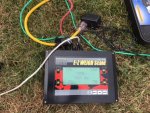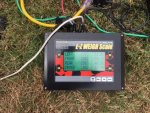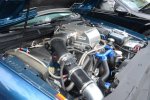driller
El Presidente
After studying all the recent and current time slips, I have concluded my full attention needs to be on the sixty foot times. I've started listing virtually everything that would effect the short times and have commenced what I have dubbed "Project 60 Foot". The suspect parameters include tuning, suspension and weight distribution. I figured this forum would be a good place to discuss the suspension component of the project.
The following items were categorized in the suspension category:
Let's discuss the available options, including any I may have overlooked. :wink:
The following items were categorized in the suspension category:
- Pinion Angle
- Differential Mounts
- Rear Shocks
- Rear Sway Bar Links
- QA1 CoilOver Suspension
- Tubular Rear Upper Control Arms
- Rear Subframe Bushings
Let's discuss the available options, including any I may have overlooked. :wink:




